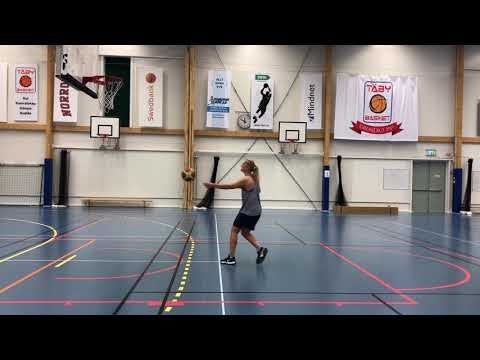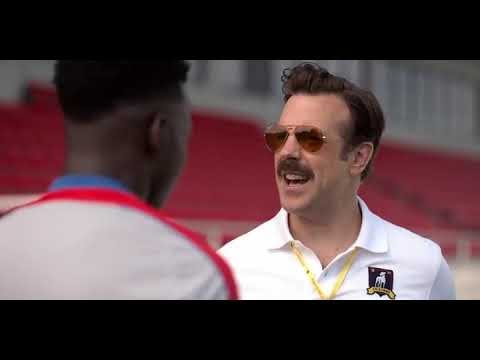Noa Dalzell, an NBA writer covering the Boston Celtics, posted a video of Jaylen Brown engaged in repetitive free-throw practice with three coaches after a recent Boston Celtics’ practice, and wrote, “Jaylen Brown, who shot 75% from the line in the Eastern Conference semifinals, is getting some free throw work in at practice.”
I re-posted the video and asked, “For the shooting experts, how do we expect a player to improve through this practice? What's the mechanism? How do we elicit improvement?”
Repetitive free-throw practice, as shown, appears in Fake Fundamentals, Volume 2. I also wrote about free-throw shooting and free-throw shooting practice in Evolution of 180 Shooter: A 21st Century Guide and on 180Shooter.com. This is not how I would practice free-throw shooting. However, I also can defend this practice.
My interest was not criticizing Brown or his coaches, but to understand how people view skill and practice. This was one small clip the Celtics allowed to be shared; I have no knowledge of their other practice drills and approaches. My comments and questions pertain only to the drill as shown on the video, which is a common drill at most levels.
Clearly, we cannot recreate the pressure or atmosphere of a playoff game in an empty practice gym. There is no realistic way to make this post-practice free-throw shooting game-like (or to be fancy, ecological). Therefore, any answer about game preparation or simulating a game is wrong. Even with a skill with as few variables as a free throw, a post-practice session in an empty gym lacks constraints and variables that affect game performance, especially playoff games. For all the talk about making practice harder than games, it is not happening, and certainly not in this context.
Therefore, when we remove game-like or game preparation, how might a player improve his free-throw shooting between playoff series?
The most common response was basically, “He’s practicing. Duh! That’s how you improve.” I now ask groups when starting with a new team or conducting a clinic how players improve, and this is the most common answer: Do more. Do more better. Reps on reps on reps. Or, as one person said, “He is shooting free throws. He doesn't miss. The best way to get better at things is to do the thing.” Gladwell convinced the world skill requires 10,000 hours of practice (another Fake Fundamental).
As I generally do, I asked, “How much?” How many repetitions until he sees improvement? How many free throws do we think a 27-year-old NBA player has attempted in his lifetime? How many more must he attempt?
Brown is a career 72% free-throw shooter, which is below average for the NBA, as league-wide, the NBA’s free-throw percentage was 78.4% in 2023-24, which is an all-time high. Brown shot only 70.3% during the 2023-24 season, down from a career-high 76.5% in 2022-23. Brown is a career 72.2% free-throw shooter during the playoffs, nearly identical to his regular season average. However, he is shooting only 63% through the first three rounds of the 2023-24 playoffs.
He is roughly league average from the three-point line, so one expects better free-throw performance. As he is 6% below the NBA average, and even his career high is below the NBA average, he likely needs to address something specific with his free-throw shooting technique. More repetitions of a 72% free-throw shooter doing the exact same thing with the same shooting style, same approach, and same practice is unlikely to develop an 80% free-throw shooter all of a sudden. More is not always enough. Any such changes should be left to the offseason at this point, however.
Based on his career and playoff percentages, he is likely to improve his free-throw shooting percentages during the NBA Finals. He has attempted 73 free throws through the Eastern Conference Finals, which is a relatively small sample size. Unless his free-throw shooting has changed in some way (injury), he is more likely to shoot 80% during the NBA Finals than to continue shooting 63%.
If he is likely to improve during the Finals through positive regression to the mean, if nothing else, what is the purpose of these post-practice repetitions?
One person responded, “It’s never enough. It’s free throws. Reps breed confidence.” This, I believe, is the correct answer for the purpose of this practice. Some (most) players derive confidence through work, extra repetitions, and seeing the ball go through the net. The practice may have no technique, skill, or game preparation benefits, and may not be representative or ecological, but it helps the players’ psyche. The ball going through the net builds their confidence, and confident shooters shoot better.
Performance is more than physical. Improving confidence is a big factor in improving free-throw percentages, especially in the short term. Repetitive free-throw practice also can have a meditative effect for some players. They benefit from the routine. The extra repetitions may help Brown relax, as he trusts he has done all he can do. As Kobe Bryant said, “Confidence comes from preparation.”
Of course, the extra practice may indicate the opposite. He may be focusing on the negative and starting to press. He may start questioning himself, which often leads to tinkering with one’s shot, rather than trusting one’s preparation. I dislike adding free-throw practice when a player struggles because I do not want to cause the player to overthink or doubt himself.
One comment referred to saying a cue in one’s head while preparing to shoot or shooting, including using an internal cue. Many coaches and players believe this; they focus on their knees, their elbow, or their follow-through as they shoot. UNLV professor Dr. Gabriele Wulf said, “If we focus our attention on the intended outcome of our actions, rather than our body movements, we see the body’s remarkable capability to produce effective and efficient movements.” I teach players to think or say “Swish” as they shoot. “More than 200 studies have shown that adopting an external focus is essential to optimal performance, and it also speeds up the learning process” (Bruzda, 2021).
Internal cuing or thoughts often arise due to pressure and are associated with choking or underperformance. Players think too much and attempt to control their movements consciously rather than focusing their attention externally on the target. Players need to learn to control these thoughts and direct their attention appropriately, but they certainly should not be taught to use internal cues intentionally, as suggested.
Therefore, extra practice can go either way, depending on the player and the environment, and is not automatically positive or a path to improved confidence. Sometimes, the best approach is to get away from the free-throw line and do something to relax physically and psychologically. I always want a player to believe the next shot is a bucket. I prefer to tell the player I trust him, make him laugh, and/or kick him off the court before he overthinks his way into a prolonged slump.
If the player believes in the repetitive free-throw practice and wants to see the ball go through the net, can we improve the drill?
Another post referred to this practice improving Brown’s rhythm. This, I believe, is where we often go wrong with repetitive free-throw practice. We believe getting into a rhythm and making a lot of shots in a row improves future performance, but games do not provide for the same rhythm. Will this rhythm carry over to the next day or next game? Players must step to the free-throw line cold and make a free throw without any practice attempts. This is different than rhythmic, repetitive free-throw shooting at practice.
The easiest, most simple improvement for the drill in the video would be to step off the free-throw line between shots, at minimum. This does not turn the repetitive free-throw practice into game-like free-throw practice, but at least incorporates a small amount of interference. Another related idea is to switch the free-throw practice to the six-spot free-throw drill to add some variable practice.
She shot 90.2% from the free-throw line during her two junior-college seasons playing for me.
The drill is simple: Shoot from one step right and left of center, one and two steps forward and one step backward, in addition to the true free throw. The drill changes very little from the video, buts add a bit of variability; each shot is slightly different, as opposed to repeating the same shot over and over.
Another simple change, obviously dependent on the number of baskets and the other players shooting around, would be to move from basket to basket after each shot. The small walk or jog and the slightly different backdrop would disrupt some of the warmup effect from shot to shot. The warmup effect is the effect of practice attempts or the benefit of shooting shots in a row; once we establish our rhythm, process the target, and more, our shooting consistency improves. These changes would disrupt his rhythm, which is the point, as players step to the free-throw line without rhythm during the game. Practicing how to shoot without the warmup shots or to create their initial rhythm is a more important goal than making a number of shots in a row.
Other potential improvements to this drill depend on the perceived causes of the shooting struggles. Now is not the time to discuss shooting techniques, but simple improvements are possible. I wrote previously about the value of a practice attempt before receiving the ball as a part of the routine, like Steve Nash. Controlling one’s breathing is another way to improve free-throw shooting percentages.
If struggles continue, maybe he could try banking free throws, like in Korea, whether to disrupt his shooting in practice or even in the game.
Brown is a professional and a thoughtful individual. He likely understands his needs better than anyone. I expect him to improve his free-throw shooting percentages during the NBA Finals regardless of his practice. The only explanation for continued struggles would be an injury or if the misses cause him to overthink his shooting technique and begin to consciously control his movements. As long as he trusts himself, and shoots with confidence, his shooting will improve. Other suggestions to improve shooting more than simple regression would be to add some variability, potentially examine his routine, and practice controlling his breathing, but these are general suggestions for shooters, not specifically for Brown, as I have no knowledge of his approach, habits, or mindset.





As a strength and conditioning coach I never had my basketball team shoot more than two free throws and it was always after sprinting baseline to baseline. My premise is that in a game you shoot free throws when your pulse is elevated therefore when we would practice we shot free throws under the same conditions.
I’m not a fan of repetitive free throw shooting practice, but I do think there’s a more subtle angle to the “rhythm” argument— that, to the extent that you get into a groove with repetitive free throws, it can introduce a player to what it feels like to shoot without overthinking or focusing too much on what the body is doing. Granted, you still have to learn how to get into that state immediately after being fouled mid-game when tired and under pressure, but, especially for younger players, I think that can be an instructive experience.